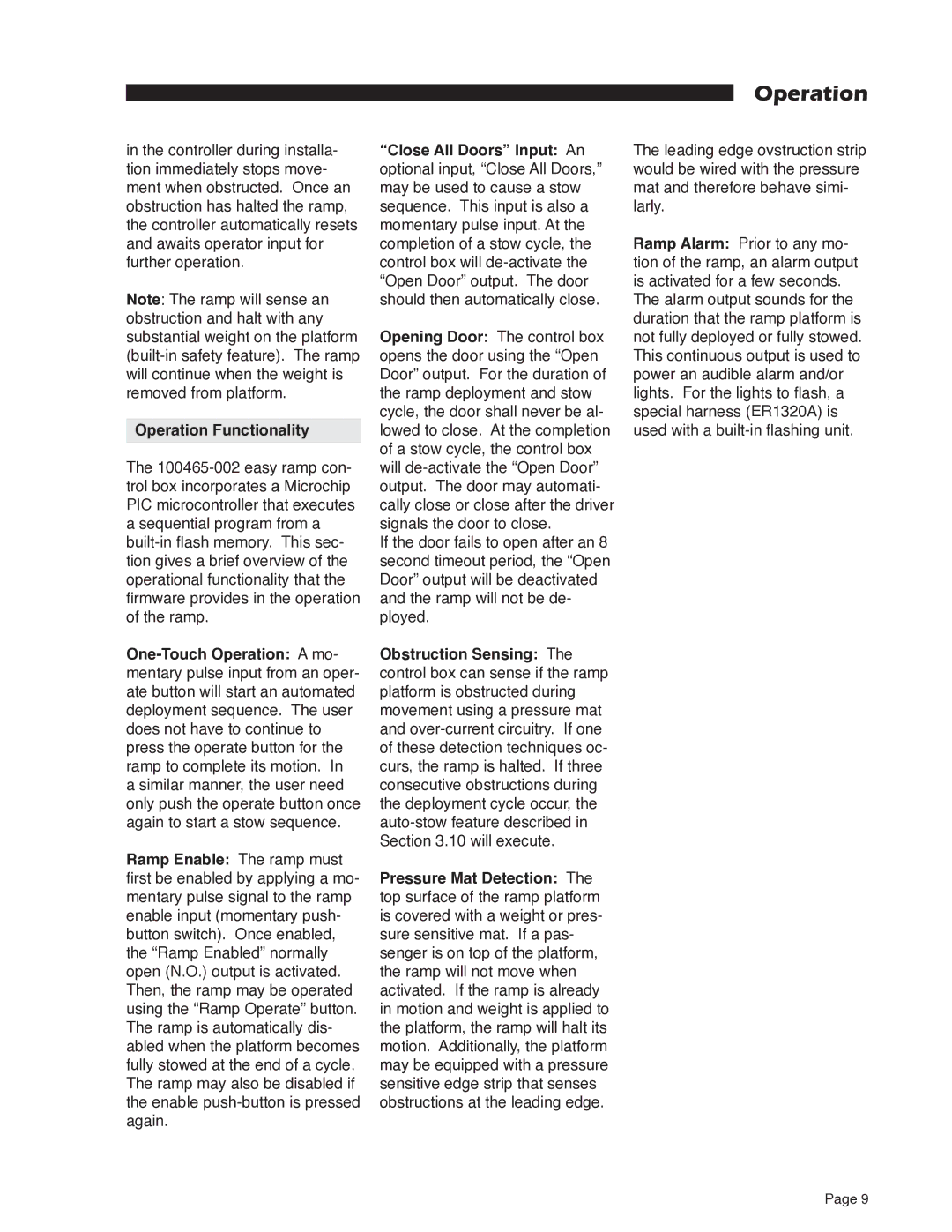
Operation
in the controller during installa- tion immediately stops move- ment when obstructed. Once an obstruction has halted the ramp, the controller automatically resets and awaits operator input for further operation.
Note: The ramp will sense an obstruction and halt with any substantial weight on the platform
Operation Functionality
The
Ramp Enable: The ramp must
first be enabled by applying a mo- mentary pulse signal to the ramp enable input (momentary push- button switch). Once enabled, the “Ramp Enabled” normally open (N.O.) output is activated. Then, the ramp may be operated using the “Ramp Operate” button. The ramp is automatically dis- abled when the platform becomes fully stowed at the end of a cycle. The ramp may also be disabled if the enable
“Close All Doors” Input: An optional input, “Close All Doors,” may be used to cause a stow sequence. This input is also a momentary pulse input. At the completion of a stow cycle, the control box will
Opening Door: The control box opens the door using the “Open Door” output. For the duration of the ramp deployment and stow cycle, the door shall never be al- lowed to close. At the completion of a stow cycle, the control box will
If the door fails to open after an 8 second timeout period, the “Open Door” output will be deactivated and the ramp will not be de- ployed.
Obstruction Sensing: The control box can sense if the ramp platform is obstructed during movement using a pressure mat and
Pressure Mat Detection: The top surface of the ramp platform is covered with a weight or pres- sure sensitive mat. If a pas- senger is on top of the platform, the ramp will not move when activated. If the ramp is already in motion and weight is applied to the platform, the ramp will halt its motion. Additionally, the platform may be equipped with a pressure sensitive edge strip that senses obstructions at the leading edge.
The leading edge ovstruction strip would be wired with the pressure mat and therefore behave simi- larly.
Ramp Alarm: Prior to any mo- tion of the ramp, an alarm output is activated for a few seconds. The alarm output sounds for the duration that the ramp platform is not fully deployed or fully stowed. This continuous output is used to power an audible alarm and/or lights. For the lights to flash, a special harness (ER1320A) is used with a
Page 9
